The second edition of the Crossbill Guide to Extremadura has just been released and – to my delight – a copy arrived in the post for me the other day.

In preparing for our birding trip to Extremadura this February (as part of the EL50 Swarovision launch), I had bought a copy of the first edition of the Crossbill Guide to Extremadura and, quite unexpectedly, read it from cover to cover within hours of buying it. I say unexpectedly, because who has ever read a guide book from cover to cover? But this book just drew me in. But as with almost everything in the world we live in, things change quickly. Five years after the publication of the first guide, the second edition boasts some nice updates and additions.
While being somewhat bird focussed, I really like that the author has dedicated time to giving the reader insight for the ecology of the region; and how things fit together. If I were to pigeon-hole the Crossbill Guides as a whole, I would probably call them “guides for the ecology-minded birder” or possibly “guides for the bird-loving ecology person”. The guide has three main (colour-coded) sections:
– Landscape. wonderful images and well-written text transport the author’s love for the geography, geology, history and habitats of the region. He succinctly explains, for example, what a dehesa is, how dehesas work, and what makes them so special. This has got nothing to do with I’d-rather-be-chewing-flour boring history lessons in high school.
– Flora and Fauna. A quick run through the biogeography and typical assemblage composition characteristic of the region (plants, mammals, birds, reptiles, insects and other creatures – let’s just lump them indiscriminately in to the category “general bird food”, my lumping, Dirk had nothing to do with that description).
– Practical Part. I like the name, it sums it up well: 17 well thought out and well chosen birding/ecologying routes to explore Extremadura (yes, I just made up a word). The progression of the route is well described, highlighting the various natural jewels one should look out for along the way. Small maps and good descriptions will help you find your way, but it is never a bad idea to have a good road map and/or GPS navigation device with you.
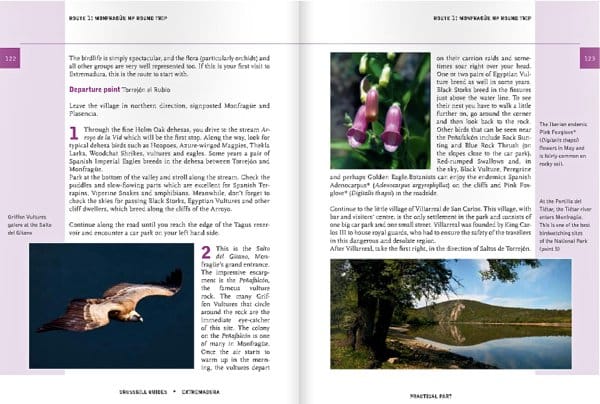 The author, Dirk Hilbers, starts the book off with his 8 highlights of Extremadura (rugged landscapes and vultures of Monfragüe; winter crane watching; etc.) and then dedicates the first real page of text to something he calls “About this guide”; a single page in which he manages to put the entire concept of the Crossbill Guides Foundation and this guide in a nice neat nutshell. And what a beautiful nutshell it i:
The author, Dirk Hilbers, starts the book off with his 8 highlights of Extremadura (rugged landscapes and vultures of Monfragüe; winter crane watching; etc.) and then dedicates the first real page of text to something he calls “About this guide”; a single page in which he manages to put the entire concept of the Crossbill Guides Foundation and this guide in a nice neat nutshell. And what a beautiful nutshell it i:
At first glance, (the Crossbill is) just a big finch with an awkward bill. But there is more to the Crossbill than meets the eye. This bill is beautifully adapted for life in coniferous forests. It is used like scissors to cut open pine cones and eat the seeds that are unobtainable for other birds. In the Scandinavian countries where Pine and Spruce take up the greater part of the forests, several Crossbill species have managed to answer two of life’s most pressing questions: how to get food and avoid direct competition. By evolving crossed bills, each differing subtly, they have secured a monopoly of the seeds produced by cones of varying sizes. So complex is this relationship that scientists are still debating exactly how many different species of Crossbill actually exist. Now this should heighten the appreciation of what at first glance was just a plump red bird with a beak that doesn’t close properly. Once its interrelationships are seen, nature comes alive, wherever you are.
The Crossbill Guide Foundation is a publishing NGO, founded by Dirk Hilbers, and they currently have 10 Crossbill Guides for great European birding/nature areas, including the Finnish Lapland, Hungary’s Hortobagy, France’s Loire Valley and the Biebrza Marshes in Poland.
Wholeness, interconnectedness, wonder, beauty. Dirk, you have done a great job of transporting your passion for this land.


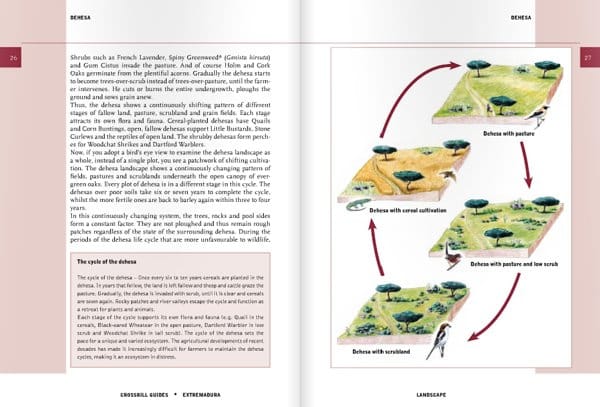
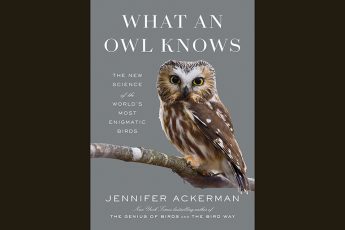
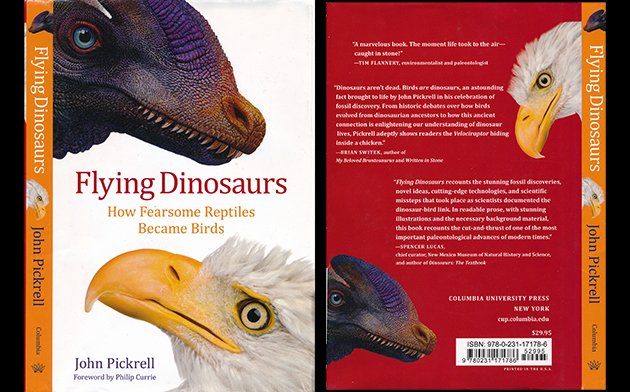
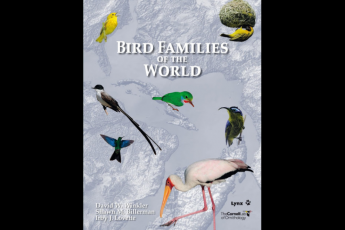

 New writers welcome – please contact us for details.
New writers welcome – please contact us for details.

















This guide is phenomenal. Thanks for sharing it, Dale. I can’t believe I just flipped through the whole volume. Now I just need to get to Extremadura!
@Mike,
yup, it really is cool (but then I think I said that enough in the review). The flip version we embedded is a neatly-crafted selection of pages from the guide including pages from each of the main sections so you have a good feel for what the book is all about.
Something I neglected to mention in the review was that the guide was published in association with two other publishers: KNNV Publishing (Netherlands) and WildGuides (UK) – both of which are not-for-profit publishers specializing in nature-related books. I love the philosophy behind these organizations!
Hi Dale,
As one of the smaller cogs in the ‘Crossbill’ set-up, many thanks for a great review. It was writing a review of the original edition of the Extremadura book that got me involved in the ‘Crossbill’ project in the first place. Like you I just loved the idea of a guide that encompassed more than just the birds. The original was a terrific book, but I think Dirk’s revision puts the book on another level – although I may be biased as I helped edit the final draft. However, although there’s an element of teamwork in these books, the vision and nitty-gritty research is all Dirk’s.
With thanks,
John Cantelo